Hoi An or Sapa: Which One Wins Your Heart?
Both are stunning destinations in Vietnam, but they offer very different experiences. Whether you crave ancient streets filled with lanterns or misty mountains dotted with ethnic villages, this guide will help you decide where your next adventure should be.
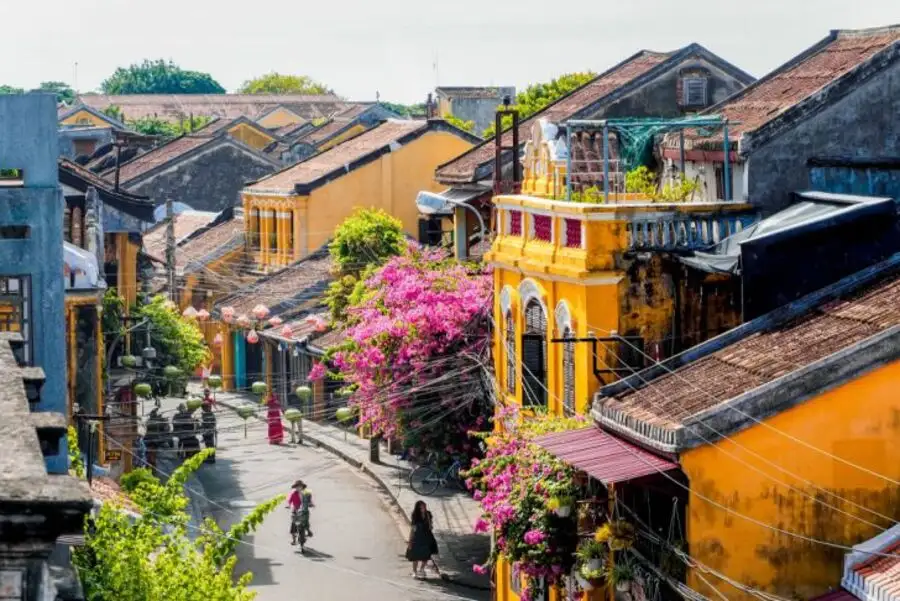
Does Sapa’s mountain culture rival Hoi An’s ancient streets?
Hoi An, recognized as a UNESCO World Heritage Site for its exceptionally well-preserved architecture and unique cultural fusion, enchants visitors with its timeless charm — lantern-lit alleys, centuries-old architecture, and a peaceful rhythm shaped by history. Once a bustling trading port, the town still carries the cultural imprints of Vietnamese, Chinese, Japanese, and European influences. Every wooden house and riverside temple tells a story, offering a graceful and poetic glimpse into Vietnam’s rich past. Cultural traditions like the craft of lantern-making, family ancestral altars, and local specialties such as cao lầu and white rose dumplings reflect a lifestyle deeply rooted in history.
Folk festivals, traditional music performances, and the quiet devotion at centuries-old communal houses further add to Hoi An’s enduring appeal. Notable celebrations include the Lantern Festival, where the town is illuminated by thousands of colorful lanterns and visitors release floating candles on the river, and the Mid-Autumn Festival, famous for its vibrant lion dances and children’s lantern parades. These events beautifully showcase Hoi An’s living heritage — a place where history is not only preserved but gently lived.
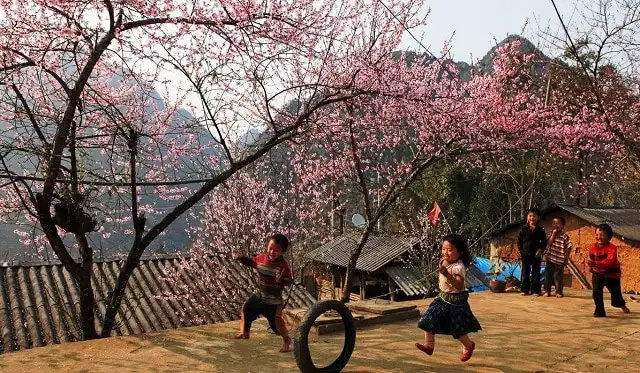
In contrast, Sapa delivers a raw and living cultural experience in the misty highlands of northern Vietnam. Home to ethnic minority groups such as the Hmong, Dao, Tay, and Giay, Sapa’s culture isn’t something displayed — it’s something lived. Each group carries its own language, spiritual beliefs, clothing traditions, and seasonal festivals. The Black Hmong with their indigo-dyed hemp garments and silver jewelry; the Red Dao women with intricately embroidered headscarves and herbal bath rituals — these are not performances, but daily expressions of identity.
Visitors can explore bustling highland markets, join in on festivals like Gầu Tào — a vibrant Hmong spring festival praying for a good harvest, or Roóng Poọc — the traditional Dao New Year celebration full of ritual dances and ancestral worship. Staying in stilt-house homestays or learning to weave thổ cẩm textiles by hand deepens the immersive experience. The scent of thắng cố, the sounds of Mông flute music, and the rhythm of farming life in terraced valleys all paint a picture of a culture that is vibrant, proud, and evolving.
While Hoi An represents a beautifully preserved past, Sapa offers culture in motion — evolving, breathing, and deeply personal. Choosing between Hoi An and Sapa depends on the kind of connection you seek: Hoi An wraps you in the quiet elegance of history, while Sapa immerses you in tradition that is alive and thriving. Different in setting and style, both destinations leave an unforgettable mark on every traveler’s heart. So whether you choose Hoi An or Sapa, one thing is certain — you’ll walk away with more than just memories; you’ll carry a deeper understanding of Vietnam’s rich cultural soul.
Read more: How many days in Hoi An? A completed guide for you to choose
Where should foodies go – Hoi An or Sapa?
For food lovers, Vietnam is a paradise — but Hoi An and Sapa serve up very different flavors deeply rooted in their local culture and environment.
Hoi An is a dream for street food enthusiasts and culinary explorers. Its cuisine reflects a unique blend of Vietnamese, Chinese, and French influences, perfected over centuries as a bustling trading port. Must-try specialties include cao lầu — thick rice noodles soaked in lye water, topped with succulent pork and fresh greens; white rose dumplings shaped like delicate flowers and filled with spiced shrimp; and bánh mì Phượng, renowned for its crispy baguettes and savory fillings. Local markets buzz with fresh herbs, tropical fruits, and fragrant spices, while cooking classes invite visitors to master traditional techniques like lantern-lit evening food tours or making hoành thánh (wonton). The culinary experience here is refined, harmonious, and deeply connected to the town’s multicultural heritage.
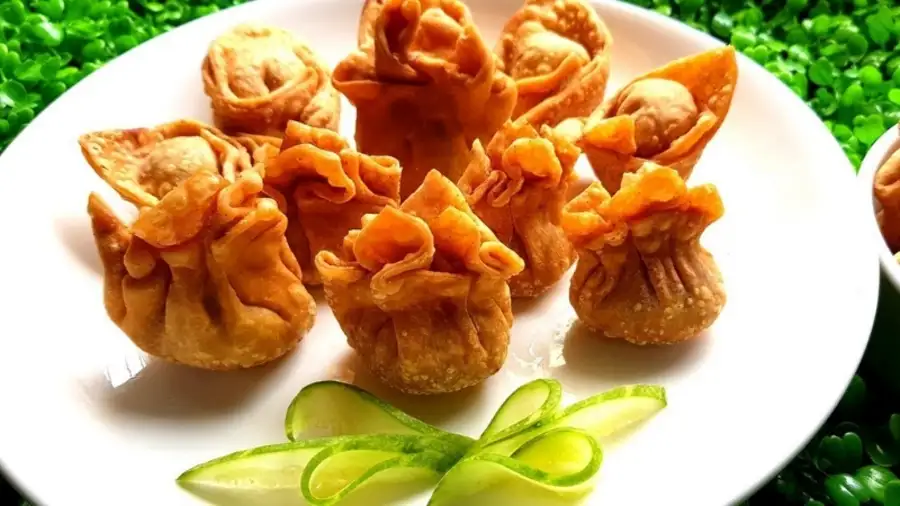
Sapa, perched high in the misty mountains, offers hearty and rustic flavors shaped by its rugged terrain and ethnic diversity. The cuisine revolves around fresh, local ingredients and traditional preparation methods passed down through generations of Hmong, Dao, Tay, and Giay people. Highlights include thắng cố — a rich, aromatic stew made from horse meat and organs; com lam, sticky rice slowly cooked in bamboo tubes over open flames; and grilled mountain herbs-infused pork or chicken. Freshwater trout is another regional specialty, often grilled or steamed with local spices. The bustling Bac Ha and Can Cau markets showcase vibrant arrays of fresh produce, herbs, handmade cheeses, and pickled vegetables. Dining in Sapa is a window into the authentic, homestyle cooking that nourishes these resilient mountain communities.

If you’re after culinary variety and famous dishes, Hoi An wins hands down with its iconic, polished flavors. But if you want to discover lesser-known, deeply ethnic tastes rooted in highland traditions, Sapa’s kitchens are calling.
Nightlife & atmosphere after dark
When the sun sets, Hoi An transforms into a glowing wonderland. The Old Town comes alive with shimmering lanterns, riverside cafes, night markets, and live music drifting through the alleys. It’s not wild, but it’s magical — perfect for romantic strolls, street food bites, or quiet drinks by the river.
Sapa, on the other hand, slows down after dark. The vibe is calm and cozy, centered around small eateries, fire-warmed homestays, and the occasional local bar. Nightlife here is less about entertainment, more about connection — with nature, locals, and fellow travelers.
So, whether you find yourself in Hoi An or Sapa, your evenings will offer distinct but equally memorable experiences if you’re craving charm and color after dark, Hoi An has the edge. But if you prefer peaceful nights wrapped in mountain mist, Sapa offers a different kind of evening magic.

Which destination has a more atmospheric and historic old quarter?
When it comes to historical depth and old-world charm, Hoi An clearly takes the lead. Its Old Town is a beautifully preserved relic of Vietnam’s golden age of trade, where centuries-old merchant houses, moss-covered temples, and iconic yellow facades transport visitors straight into the past. Recognized as a UNESCO World Heritage Site, Hoi An offers a cohesive and immersive historical experience that few places in Southeast Asia can rival.
In contrast, Sa Pa’s town center reflects a different story – one shaped by colonial influences and rapid tourism growth. While it features a few remnants of the French colonial era, such as the Stone Church and scattered villas, and the cultural traditions of local ethnic minorities are still alive in nearby villages, the town itself lacks the architectural continuity and immersive heritage atmosphere found in Hoi An.
So, if you’re looking to walk through history on every street corner, Hoi An’s ancient quarter remains the unrivaled choice.
Which place is better for nature lovers and hiking enthusiasts?
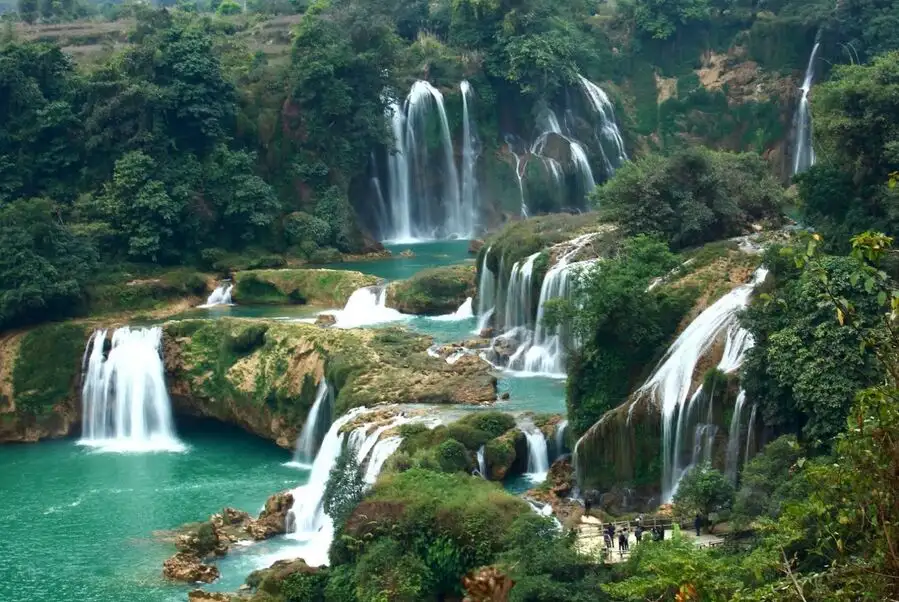
If your heart longs for mountain trails, rice terraces, and raw natural beauty, Sapa is the clear winner. Nestled in Vietnam’s northern highlands, Sapa is a dream come true for hikers and nature lovers. Trekking routes wind through emerald rice fields, bamboo forests, and remote ethnic villages. Whether you’re tackling Mount Fansipan — the highest peak in Indochina — or enjoying a peaceful walk through Muong Hoa Valley, the landscapes are breathtaking at every turn. Other must-visit natural spots include Silver Waterfall, Love Waterfall, and the terraced fields of Ta Van village, all offering spectacular scenery and opportunities to immerse yourself in the highland environment.
Hoi An, on the other hand, offers a more laid-back connection to nature. You’ll find peaceful countryside bike rides through lush rice paddies in Tra Que Vegetable Village, tranquil boat trips on the Thu Bon River, and scenic beaches like An Bang and Cua Dai. While these spots offer charm and relaxation, they simply can’t compete with the dramatic mountain terrain and extensive trekking opportunities of Sapa.
For adventure seekers and outdoor explorers, Sapa delivers a far more immersive nature experience.
Read more: Hoi An day trip from Da Nang: top itinerary & tips
Local crafts & shopping experiences
It’s a tough question to answer — when it comes to shopping, Hoi An or Sapa each offer unique charms that appeal to different tastes. It really depends on what you’re looking for — style and elegance, or raw cultural authenticity.
Hoi An stands out for its tailored fashion and artisanal crafts. The town is famous for high-quality custom-made clothing, leather goods, lanterns, and traditional paper art. Its shops blend centuries-old craftsmanship with modern tastes, and the shopping experience is polished, convenient, and stylish.
Sapa, on the other hand, offers a more rustic, handmade charm. Here, you’ll find vibrant textiles, handwoven fabrics, silver jewelry, and embroidery created by ethnic minorities like the Hmong and Dao. The items may be less refined than Hoi An’s, but they are rich in cultural identity and tell stories of generations.
So, if you’re looking for fine craftsmanship and elegant souvenirs, Hoi An is your go-to. But if you value authenticity and ethnic artistry, Sapa’s markets offer a rawer, more personal experience.
Who should visit — Which destination fits your travel style?
Choosing between Hoi An and Sapa depends largely on what kind of experience you’re craving. Whether you’re traveling with family, seeking romance, or chasing adventure, each destination offers something special. Let’s break down which place suits your travel style best — so you can pick the perfect spot for your next getaway.
Best for families

If you’re traveling with kids or family members of all ages, Hoi An makes family travel effortless and enjoyable. Its safe, compact streets are easy to navigate with little ones, and the town’s calm vibe means parents can relax while children explore creative activities like lantern-making or gentle riverboat rides. Plus, nearby beaches and countryside bike tours add variety without exhausting younger travelers.
While Sapa’s stunning mountain scenery is breathtaking, its rugged trails and higher altitudes can be challenging for young children or elderly family members. Families with older kids who love hiking and outdoor exploration will find Sapa rewarding, but for most, Hoi An’s comfort and accessibility make it the smarter family choice.
Best for couples
Couples searching for timeless romance will fall head over heels for Hoi An’s enchanting old streets lit by glowing lanterns, riverside dining, and cozy boutique hotels. The town’s intimate atmosphere invites slow strolls and quiet moments, perfect for creating lasting memories together.
On the flip side, Sapa offers couples a more adventurous and secluded escape, surrounded by misty mountains, traditional hill tribe villages, and cozy lodges with crackling fireplaces. It’s ideal for partners who bond over nature, exploration, and shared adventures.
Simply put, if you want classic romance steeped in culture, Hoi An is your go-to. But if you crave a couple’s retreat filled with outdoor thrills and breathtaking landscapes, Sapa wins hearts.
Best for solo travelers and adventurers

For solo travelers craving excitement and new connections, Sapa is a paradise of adventure. Trekking routes lead to remote villages where you can meet locals, and hostels buzz with like-minded explorers. It’s perfect if you want to push your limits and dive deep into nature and culture.
Hoi An, by contrast, is a haven for solo visitors looking for a peaceful, enriching experience. Here, you can take your time with cooking classes, art workshops, or simply unwind at a riverside café — perfect for reflection and slower travel.
So, if your soul yearns for challenge and camaraderie, Sapa is the place to be. But if you prefer calm, culture, and creativity on your own terms, Hoi An will feel like home.
Best for culture seekers and nature lovers
Culture lovers will find themselves utterly captivated by Hoi An’s rich tapestry of history, preserved architecture, and vibrant traditions. Walking through its ancient streets is like stepping back in time — an immersive experience hard to match anywhere else.
Nature enthusiasts, meanwhile, will be drawn to Sapa’s breathtaking landscapes of terraced rice fields, soaring peaks, and ethnic minority villages. It’s a world apart from city life, where every trail reveals new natural wonders and cultural insights.
In short, Hoi An is a cultural jewel, while Sapa is nature’s masterpiece. Your choice depends on whether your heart beats for heritage or wilderness.
Best for relaxation and adventure
If unwinding is your priority, Hoi An offers serene beaches, soothing spas, and a laid-back riverside ambiance that invite you to slow down and recharge. It’s an ideal setting to escape the rush and savor simple pleasures.
For those who thrive on movement and excitement, Sapa delivers adrenaline with every hike, motorbike ride, and panoramic mountain view. It’s a playground for thrill-seekers ready to immerse themselves in rugged beauty.
So, whether you want to relax or revitalize, both destinations offer something special — but Hoi An is the sanctuary for calm, while Sapa is the adventure hub.
Best time to visit: When should you choose Hoi An or Sapa?
Weather can make or break your travel experience. So when does Hoi An shine brightest, and when is Sapa at its most breathtaking? Let’s dive into the ideal seasons for each destination to help you plan your perfect trip.
Hoi An glows in the dry season (February – August)
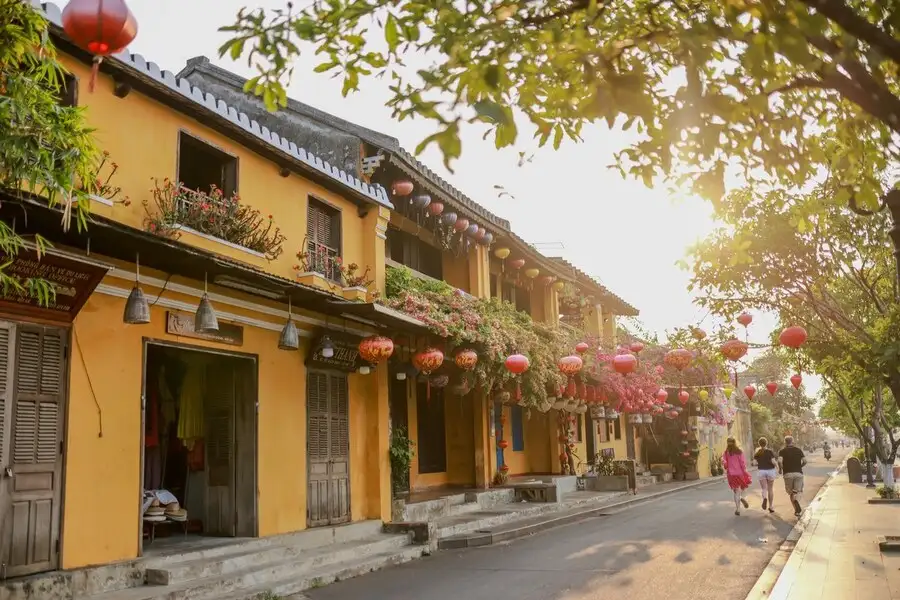
From February to August, Hoi An enjoys warm sunshine, minimal rainfall, and clear skies — perfect for strolling through the lantern-lit Old Town, enjoying river cruises, or lounging at An Bang Beach. April and May strike a great balance: sunny but not too hot.
Sapa in bloom: March to May for fresh treks and flowering hills
Springtime in Sapa brings lush greenery, mild weather, and colorful flowers. From March to May, it’s the perfect window for trekking through hill tribe villages and exploring the vibrant countryside.
Sapa’s golden season: September to November
If you want to catch the iconic golden rice terraces, plan your visit between September and November. The weather is cool, dry, and clear — ideal for photography, nature walks, and breathtaking mountain views.
When to avoid: Rainy days and tourist crowds
- Hoi An: Best to avoid September to November, when heavy rains can cause flooding in the Old Town.
- Sapa: June to August can bring heavy rains and landslides, making trekking routes slippery and risky.
Travel budget: which destination is more affordable?
When it comes to overall travel costs, Hoi An or Sapa offer two very different spending experiences. Sapa tends to be more budget-friendly, especially for travelers who are willing to stay in local homestays or venture into the surrounding villages. Accommodation here is generally cheaper, and many of the outdoor activities—like hiking through rice terraces or visiting ethnic minority villages—are either free or low-cost. However, getting to Sapa often requires more time and money, with additional expenses for overnight trains or buses from Hanoi.
Hoi An, on the other hand, is easier and cheaper to reach thanks to its proximity to Da Nang International Airport. Once in town, you’ll find an abundance of charming accommodations, but staying near the Ancient Town or beach can push prices higher, especially during peak seasons. That said, the street food in Hoi An is both inexpensive and exceptional, offering meals for as little as one or two dollars. While some attractions like the Old Town entrance ticket or traditional craft workshops have small fees, they deliver excellent value for the cultural experience they provide.
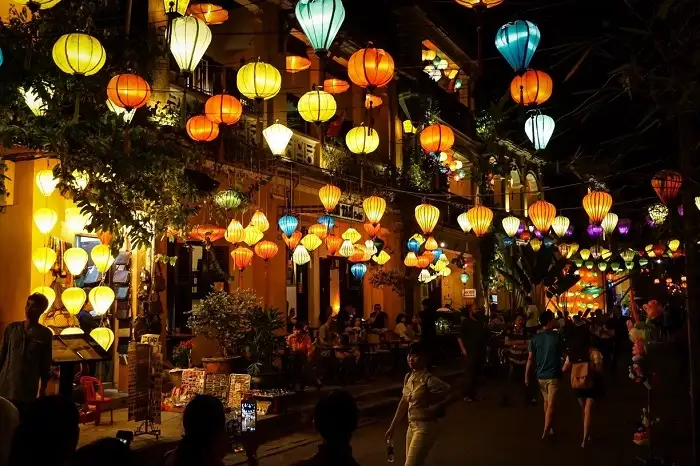
In the end, whether you choose Hoi An or Sapa, your budget will shape the kind of trip you have. Generally, Sapa is the more affordable destination, particularly for backpackers or travelers seeking low-cost, nature-based adventures. Hoi An, while slightly more expensive in certain areas, still offers good value—especially for those who prioritize comfort, convenience, and rich cultural experiences.
Hoi An enchants with its glowing lanterns, rich history, and charming riverside life, while Sapa captivates with misty mountains, ethnic diversity, and raw natural beauty. Each destination tells a different story — and the best choice truly depends on what kind of journey you’re seeking. Still undecided whether to choose Hoi An or Sapa? Let Bliss Hoi An be your serene starting point. Nestled by the sea and close to the heart of the ancient town, our resort offers the perfect blend of relaxation and cultural immersion. Discover authentic experiences, thoughtful service, and peaceful luxury — your unforgettable Vietnam escape begins here.









